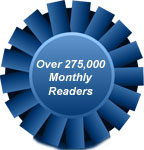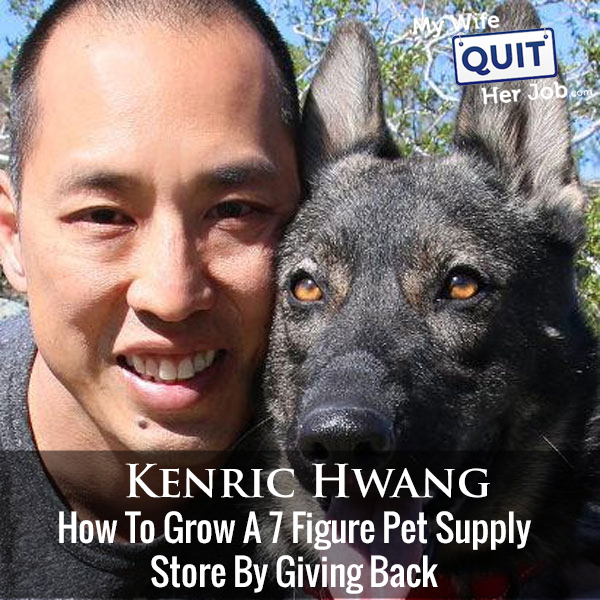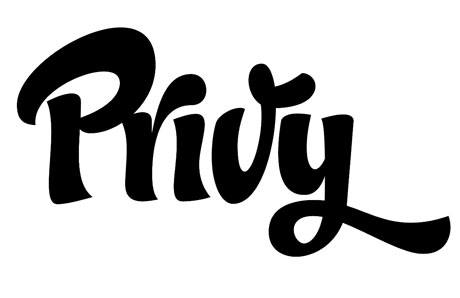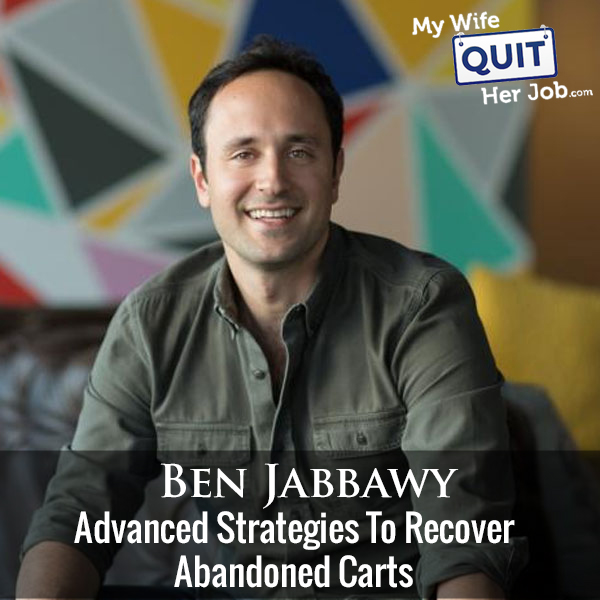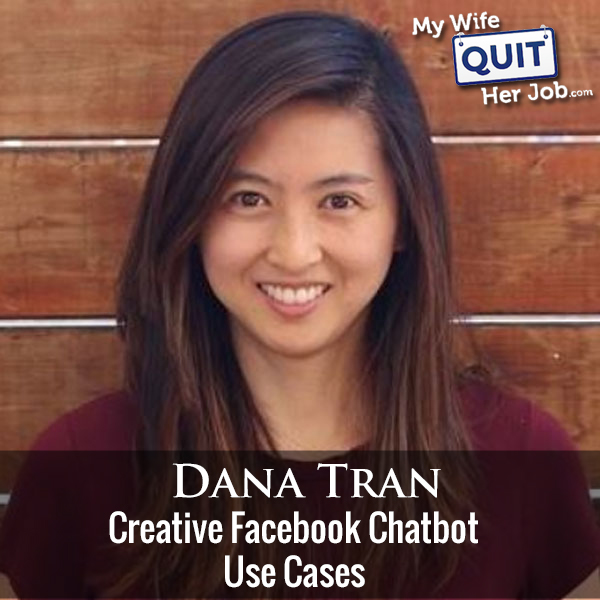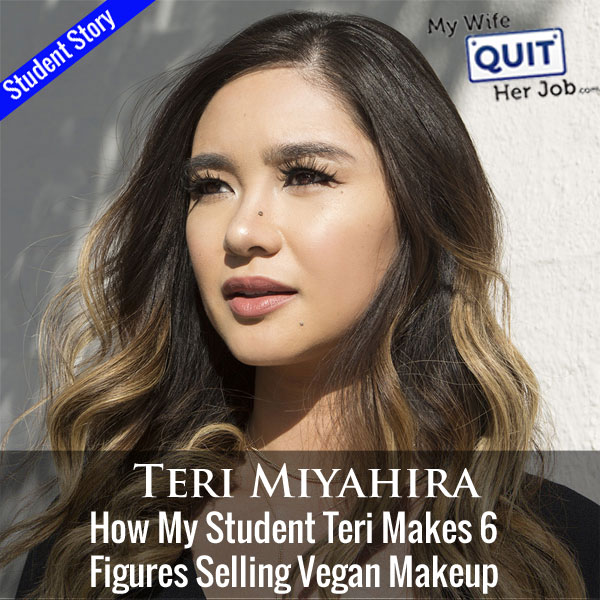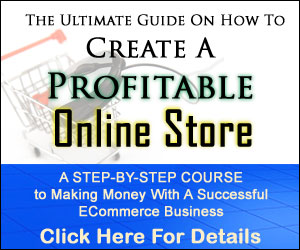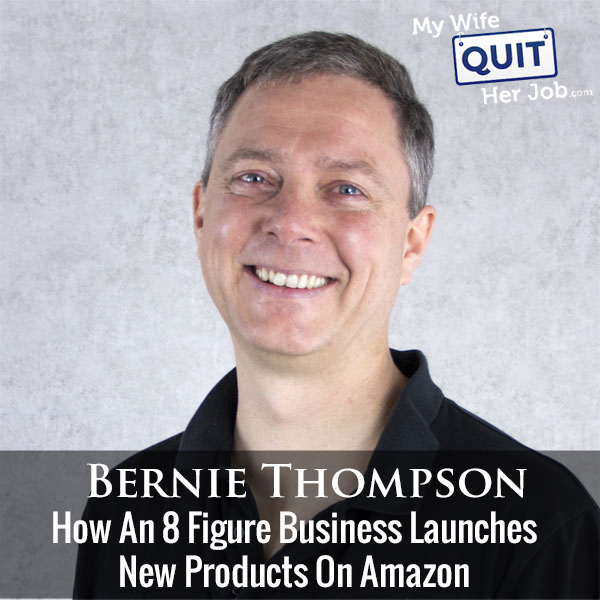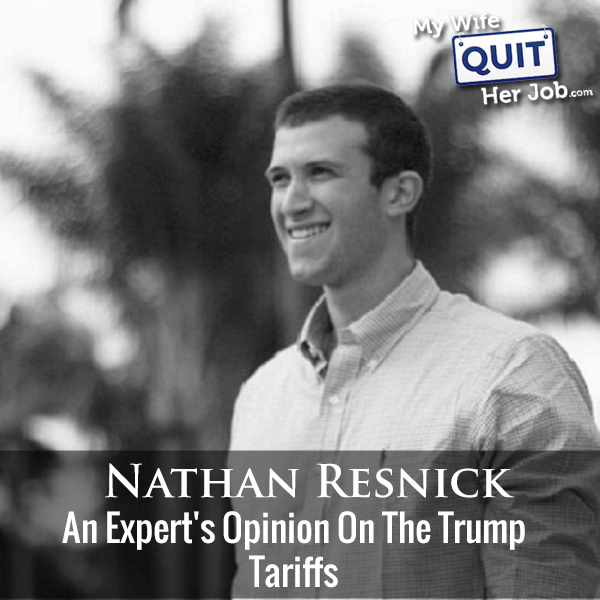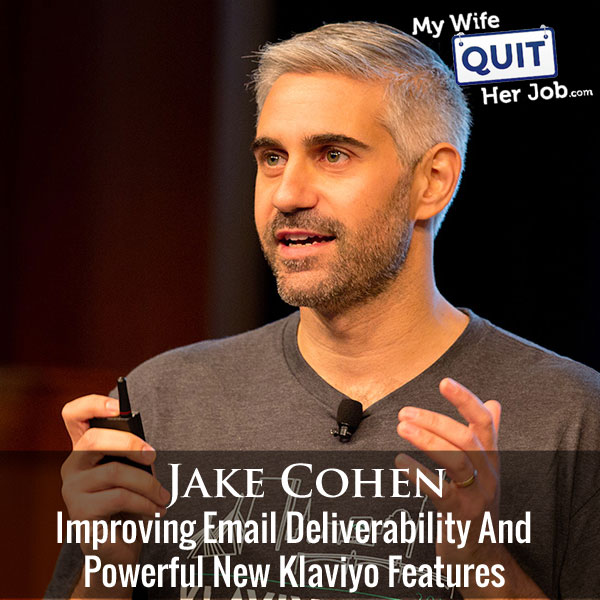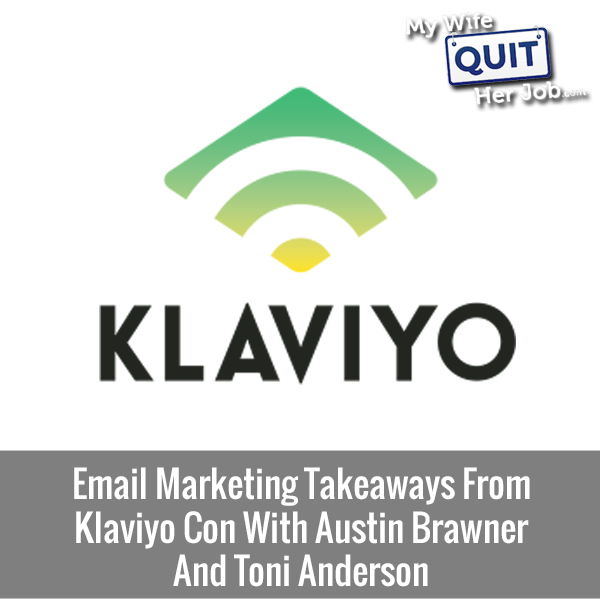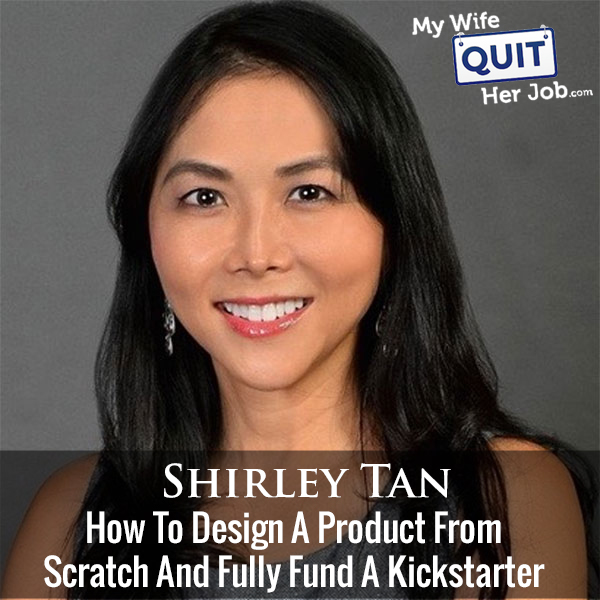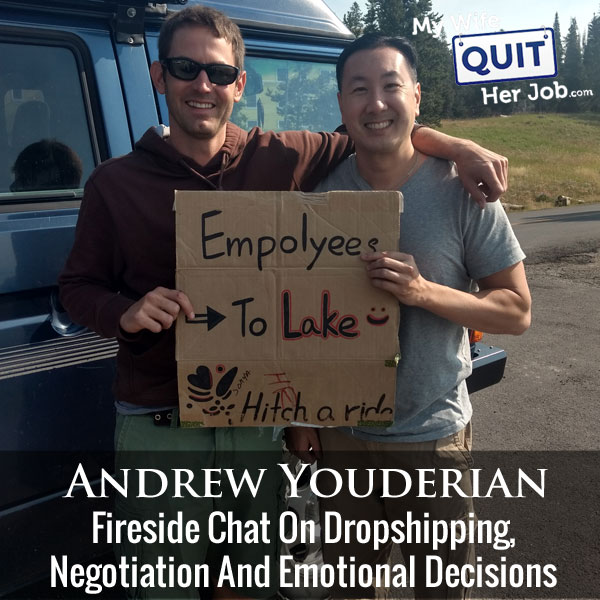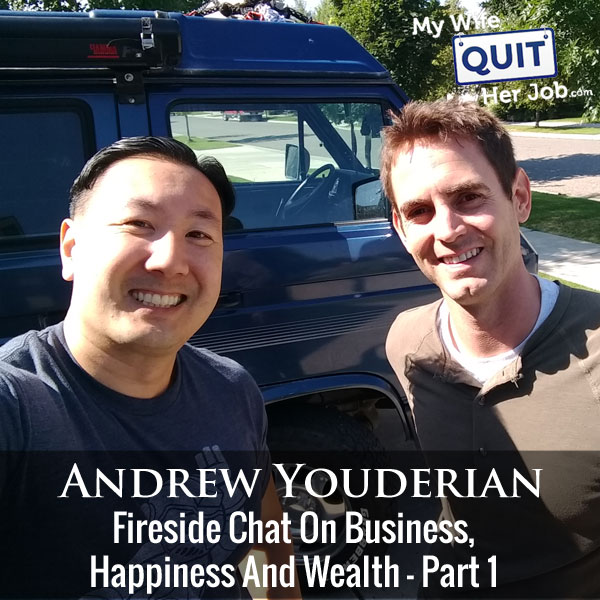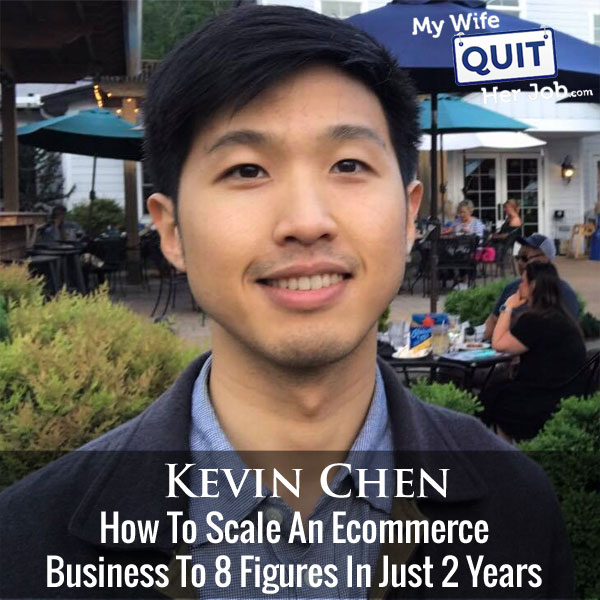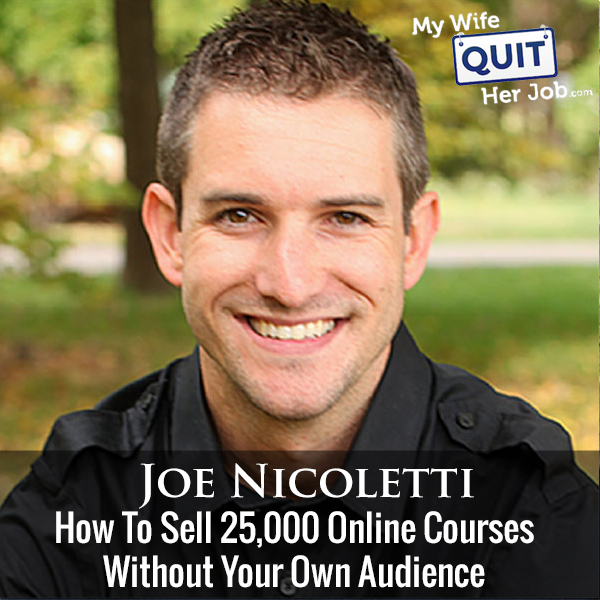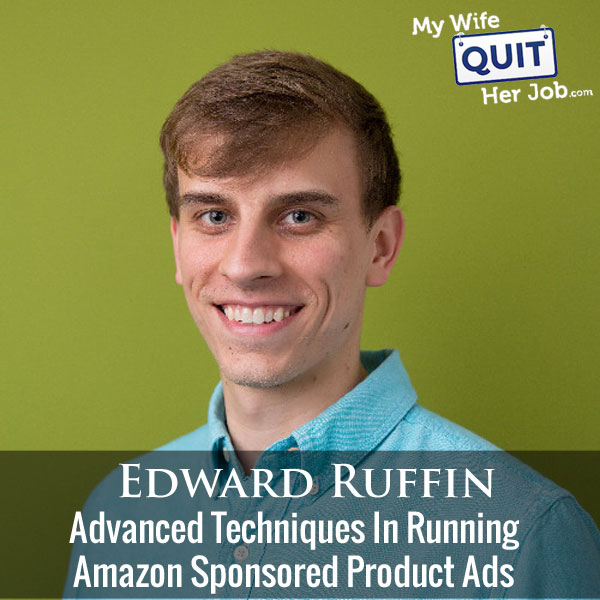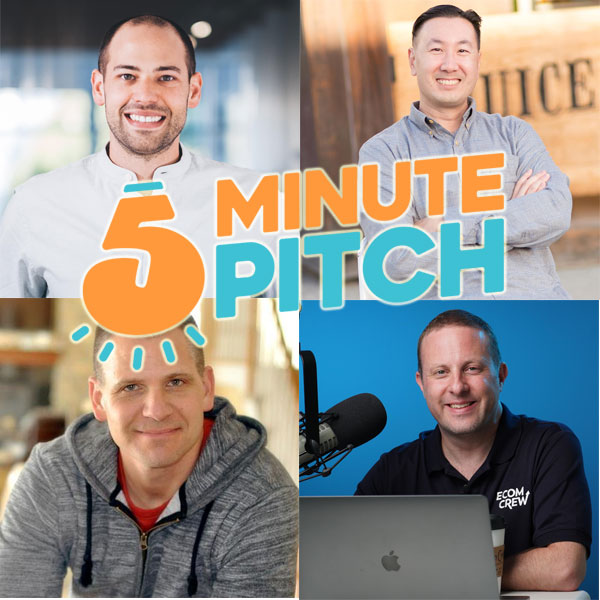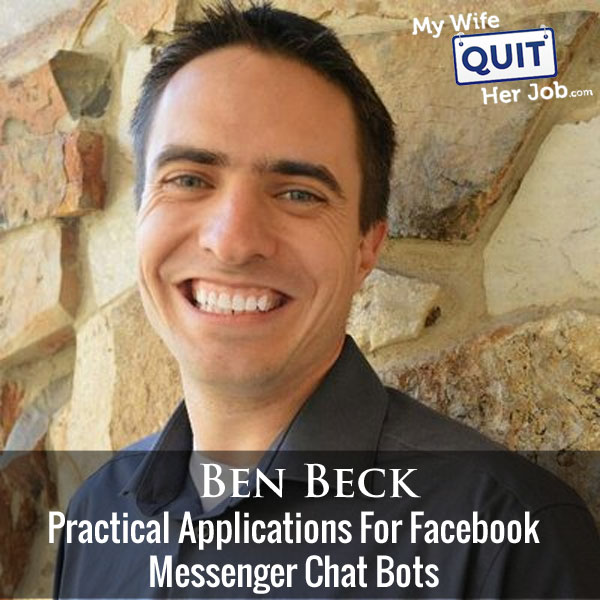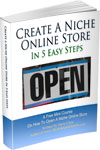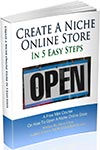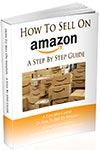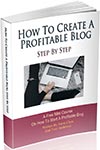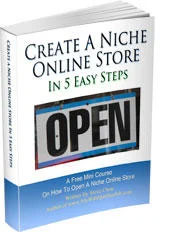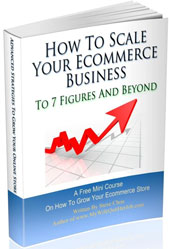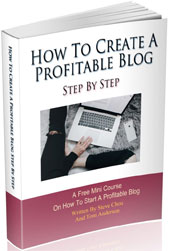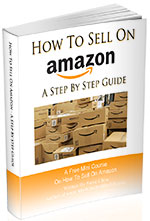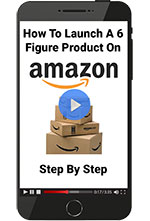Podcast: Download (Duration: 52:57 — 60.9MB)
Today I’m really excited to have Kenric Hwang on the show. Kenric is someone who I’ve known for a very long time we both got started in ecommerce at around the same time.
Many years ago, he started a successful outdoor products company, sold it and then started another company called Max & Neo which sells dog collars and accessories online.
Now Max & Neo is no ordinary dog collar company and Kenric has managed to get tons of attention on social media and the press because of one key value proposition. Enjoy!
What You’ll Learn
- Why Kenric sold his outdoor products company and why he’s more passionate about Max & Neo
- How Kenric has grown Max and Neo to 7 figures in such a short period of time
- Kenric secret to press coverage and social media virality
- How Kenric sells commodity products so effectively
- Why Kenric is anti-dropshipping
Other Resources And Books
Sponsors
Klaviyo.com – Klaviyo is the email marketing platform that I personally use for my ecommerce store. Created specifically for ecommerce, it is the best email marketing provider that I’ve used to date. Click here and try Klaviyo for FREE.
Privy.com – Privy is my tool of choice when it comes to gathering email subscribers for my ecommerce store. They offer easy to use email capture, exit intent, and website targeting tools that turn more visitors into email subscribers and buyers. With both free and paid versions, Privy fits into any budget. Click here and get 15% OFF towards your account.
GoBrandWin.com – The fastest and most effective way to grow your email list for free using group giveaways. Click here to signup for free.
SellersSummit.com – The ultimate ecommerce learning conference! Unlike other events that focus on inspirational stories and high level BS, the Sellers Summit is a curriculum based conference where you will leave with practical and actionable strategies specifically for an ecommerce business. Click here and get your ticket now before it sells out.
Transcript
Intro: You’re listening to the My Wife Quit Her Job Podcast, the place where I bring on successful bootstrapped business owners and delve deeply into what strategies are working and what strategies are not in business. Today, I’ve got an old friend on the show, Kenric Hwang and Kenric is someone I met randomly many years ago via the Fast Lane forums. And we’ve hung up on many occasions over the years at various events. But Kenric runs Max and Neo, which is an ecommerce store selling pet supplies, and he’s managed to totally blow up his sales because of a single strategy. And in fact, I wouldn’t even call it a strategy but you’ll have to listen to find out.
But before we begin, I want to give a quick shout out to Klaviyo who is a sponsor of the show. Super excited to talk about Klaviyo because they are the email marketing platform that I personally use for my ecommerce store and I depend on them for over 30% of my revenues. Now Klaviyo is the only email platform that is specifically built for ecommerce stores, and here is why it is so powerful.
Klaviyo can track every single customer who has shopped in your store and exactly what they bought. So let’s say I want to send out an email to everyone who purchased a red handkerchief in the last week, easy. Let’s say I want to set up a special auto-responder sequence to my customers depending on what they bought, piece of cake, and there is full revenue tracking on every single email sent. Now Klaviyo is the most powerful email platform that I’ve ever used and you could try them for free at mywifequitherjob.com/K-L-A-V-I-Y-O. Once again, that’s mywifequitherjob.com/K-L-A-V-I-Y-O.
I also want to give a shout out to Privy who is also a sponsor of the show. Privy is the tool that I use to build my email list for both my blog and my online store. Now what does Privy do? Privy is an email list growth platform and they manage all of my email capture forms. And I use Privy hand-in-hand with my email marketing provider. Now, there are a bunch of companies out there that will manage your email capture forms but I like Privy because they specialize in ecommerce. Right now I’m using Privy to display a cool wheel of fortune pop up. Basically a user gives their email for a chance to win valuable prices in our store. And customers love the gamification aspect of this. And when I implemented this form email signups increased by 131%.
I’m also using their new cart saver pop up feature to recover abandoned carts as well. So bottom line, Privy allows me to turn visitors into email subscribers, which I then feed to my email provider to close the sale. So head on over to Privy.com/Steve and try it for free. And if you decide you need some of the more advanced features, use coupon code MWQHJ for 15% off. Once again, that’s P-R-I-V-Y.com/Steve. Now onto the show.
Welcome to the My Wife Quit Her Job Podcast. We will teach you how to create a business that suits your lifestyle, so you can spend more time with your family and focus on doing the things that you love. Here is your host, Steve Chou.
Steve: Welcome to the My Wife Quit Her Job Podcast. Today I’m really excited to have Kenric Hwang on the show. Now, Kenric is actually someone who I’ve known for a very long time. I believe we were first introduced through Billy Murphy and we actually met for the first time at Ecommerce Fuel Live a long time ago. And since then, we’ve hung out a number of times at various entrepreneurship retreats. And Kenric actually got started in ecommerce a year or so before I did, and he was actually known on the Fast Lane forums in case any of you follow MJ DeMarco.
Anyway, Kenric started a successful outdoor products company and sold it and since then he decided to start another company called Max and Neo, which sells dog collars and accessories online. Now, Max and Neo is no ordinary dog collar company. And Kenric has managed to get tons of attention on social media and the press because of one of his main value propositions. And I’ll leave that a mystery until the interview starts. And with that, welcome to the show Kenric, glad to have you back.
Kenric: Hey Steve, I’m glad to be here and finally be on your podcast.
Steve: Yeah, man. It’s been a while. I had to wait until you got back from Africa.
Kenric: Yeah, I was just on an African Safari and it was really, really exciting and interesting. But back in the States right now.
Steve: So Kenric, you got a pretty interesting history and background. Please give the audience a brief overview of how you got into ecommerce in the first place.
Kenric: Okay, well, like you mentioned, I started ecommerce I think a year or two before you. I remember it was 2007 when I started my first company. And back then the landscape of ecommerce was very different and I wanted a way to make money and to live wherever I wanted to. So, I basically did some research and ended up finding out that drop shipping was the way to go. So when I started my first ecommerce site in 2007, it was a 100% drop ship store.
Steve: Oh okay.
Kenric: Yeah. And that did really well. And I found the limitations of drop shipping a couple of years in.
Steve: What were the limitations just for clarification?
Kenric: Well, the biggest limitation was I was limited to what products I could carry because I could only carry products that people were willing to drop ship. That was one. But the biggest one was what happened my second Christmas was that my best seller — so I worked very hard to SEO my website up to the front page of Google, I was ranked top three for my products. And what happened was my main product was selling very well. And when I went to order it from the drop shipper on December 5, it was I think December 5th, I sent the order to the drop shipper and they were sold out of that product for the rest of the Christmas season.
And so yeah, so that really sucked because here I had a top ranking website and I had a hot seller and I had no product to sell. And that’s when I realized I wasn’t in control of the stuff that I was selling. So I could do all this work and have no product to sell because everybody else with the drop shipping company, we were all using one drop shipper. And that drop shipper was just distributing my products out to every other ecommerce store. So basically, everybody in the country ran out of stock of this product on that same day, or I should say everybody else who drop shipped this product ran out of stock on that day.
Steve: I see.
Kenric: So, a fundamental change for me was the next year I said, there’s no way I’m going to run out of stock. So I have to carry my own stock. And what I did is I went to the drop shipper and I said hey, how many of blah, blah, blah do you guys have in stock and they said 500. And I said, I’ll take all 500 of them. And so I bought all their stock out. So guess what happened that year? I was the only store that had it in stock. Yeah. Everybody else who drop shipped went out of stock like on December, on Black Friday because that’s when I bought all the stock. And then I was able to sell all 500 units throughout the course of the holiday season.
Steve: Is this the outdoor products company or no?
Kenric: Yes.
Steve: Oh, it is. Okay, because I vaguely remember you manufacturing your own products for that.
Kenric: Well, that was a precursor to that because from carrying my own stock that one Christmas, I went to importing my own designs and things the year after because I learned how important it was to be in control of my inventory. So, I went from a 100% drop shipping company to basically carrying 95% of the products that I sell.
Steve: Can you comment on how the margins grew when you did that? Like what were your margins drop shipping versus when you actually owned the label and the brand for the product?
Kenric: Yeah, they grew just immensely because when I was — so if I look at one product that had a $100 price point, I was paying $79 for it drop ship plus shipping. So I would get about $79, I mean I would be charged $79 plus about 10 bucks for drop shipping. That same product when I ordered it from China, I was able to land it for $37.
Steve: Wow okay.
Kenric: Yeah so it was just huge and once I did that once, I was like why am I drop shipping all the rest of these products because my store already had traffic; it was ranked very high in Google. So it would have traffic and I would know what products sold very well. So as soon as I would identify like, hey, this product is selling very well and all I’m doing is sending these orders to the drop shipper, I would look at how to import that product, not the exact same product but my version of that product from China.
Steve: Would you say that drop shipping today is a good option to figure out what sells, or would you just bypass drop shipping all together?
Kenric: I haven’t done drop shipping in a long time. So I don’t really know. I just know that you are not in control of a lot of things when you drop ship. Actually, one other reason that I didn’t like it was every year, the drop shipper would say, our costs have increased, and they’d raise that price. So for example, that $79 product when I started the first year it was $69. The second year it was 79, then it was like 85 the third year, and there’s nothing you can do about it right? What are you going to tell the drop shipper? He’s like, we need to raise this price to $90, all you can do is raise the price on your ecommerce store.
Steve: Right.
Kenric: And I think right now, it’s very — in my opinion, it’s very hard to rank these types of stores where you get any type of traffic without running a lot of ads to get to the point where you know what’s like a good product, and what’s a bad product.
Steve: I would agree with that. Yeah, the SEO game has changed dramatically in the last 10 years or 11 years.
Kenric: Yeah, yeah, definitely. Yeah. 2007 it was pretty easy.
Steve: So what did you — oh sorry, go on.
Kenric: Oh, I was going to say that was when you just got a domain with your keywords in it and got some back links. It was much easier than it is now.
Steve: So ultimately, why did you — I remember your store being very profitable, and I’m just kind of curious why you ended up selling that company.
Kenric: I decided to sell the company, I think it was — so I started in 2007 and I sold the company earlier this year. And it did take about; I think it took about 12 months to sell it. So I decided to sell it back in 2017, and the main reason was I just was not into that business anymore. I remember back in 2007 and let’s say the first five years I was always writing blog posts to get the websites ranked higher. I was shooting a lot of video and doing my own product photography, and at some point I think it just became a moneymaker for me, and I just felt like I had to do something else. Also at some point I think the money becomes less important as you go through your progressions running a business, and I was getting pretty comfortable I guess.
Steve: So did you have any alternative sources of income prior to it being sold?
Kenric: Well, I actually started Max and Neo a year before I decided to sell my first company. And so I was running the two companies, the outdoor company and Max and Neo at the same time, and I was devoting let’s say 50/50 to each one. And at some point, I felt like that I wasn’t giving Max and Neo enough attention, and I wanted to grow that a lot more. So I felt like I had to let go of the outdoor company in order to let Max and Neo basically grow faster or to free it up.
Steve: Okay, so for the people, for the benefit of the audience so what is Max and Neo and what do you sell there?
Kenric: Okay, so Max and Neo sells dog products. We sell dog leashes, collars, harnesses, supplements, and blankets and just things that you need for your dog. What sets us apart is that for every product we sell, we donate a product to a dog rescue or a shelter. And that’s really why I was so passionate about starting this company because I wanted to help dog shelters and rescues. And if you contrast that with my outdoor products company, that one just became a moneymaker to me.
So there was two totally different motivations in why I would wake up during the day. One was like, okay, I got to work on this outdoor Products Company, because I need to keep the money coming in and I just can’t let that business wither away. And then I would work on Max and Neo because my main goal of Max and Neo was to donate as much as possible. So that basically came to a head and I was like, I have to sell this company if I’m going to grow Max and Neo to where I think it could go.
Steve: But Max and Neo was far less profitable than the outdoor Products Company right?
Kenric: Correct.
Steve: Okay. So at that point, it sounds like you were comfortable from a money perspective and you actually didn’t need the money that the outdoor Products Company was generating.
Kenric: Yeah. So the company was doing — it started in 2007. And it started to take off in about 2010. So I basically had a seven years of very, very good income, which I saved a lot of it and that’s when I just began looking for something that I was more passionate about or something that would be just more fulfilling to me, so a reason to wake up in the morning I guess, and that’s what Max and Neo was to me. So for those — I guess I’d like to just go on a quick tangent, for those who don’t know what dog rescues and shelters do is that, let’s say somebody finds a stray dog, it usually goes to like a local County Humane Society.
And those places they basically hold on to a dog for let’s say a week or 14 days before they have to decide what to do with the dog which is sometimes it’s just, it’s not a good situation for a dog. So somebody who runs a dog rescue will take these dogs from these local humane societies and they’ll basically try to place them into a home. So let’s just say there’s like in my case, I work with mainly German Shepherds. So if a German Shepherd arrives at a humane society, a German Shepherd Dog rescue will try to pick it up and rescue it and basically take it to their own facility where they take care of the dog until they can find a permanent owner for the dog.
And these rescues are usually almost always all nonprofits and they run on donations and things like that. And where they generate their money is through donations or through adoptions and things like that. And they pay for all the expenses themselves. So, whenever you go to a rescue to adopt a dog, they don’t just hand you the dog without a collar or a leash. I mean, how would you take it home? How would you get it into your car?
So basically what they do is they’ll give you the collar that’s on the dog, they’re basically giving to you, right because it comes with the dog, and then they usually give you a leash and maybe some other things like a little bit of food and things to get you started. All this comes from money that they spent to get these products. So I was basically trying to figure out how can I make it so they don’t have to spend their money on these products and they can spend it on other things?
Steve: I know for your store you pretty much give one to one, right?
Kenric: Yes.
Steve: And that can’t be that profitable. So, is profit a part of your motivation at all, or was it just the giving back part? I mean, in order for it to be self sustaining, you have to be able to generate a profit right?
Kenric: Correct. Well, I guess this is what’s more because I ran my other ecommerce store and I got it to where it was profitable, and I wasn’t feeling fulfilled from it, I sort of knew that just starting another business just to make a bunch of money was probably going to end up at the same place, and I definitely didn’t want to do that. So when I first started this, I actually looked, and I was like, okay, there’s a lot a lot of dogs that are in bad situations and I wanted to help dogs. And a lot of people do, a lot of people want to help dogs and animals, and things like that, and I basically just took that progression. I’m like, okay, how do I help dogs?
And then I decided like, okay, dog rescues help dogs, so then how do I start my own dog rescue? That was a thought in my head but starting your own dog rescue is not really scalable right? You have just one dog rescue, so I was looking for something that was bigger. So then I then came to the thought, how do I help rescues? And that’s when the thought of donating to rescues came into my mind.
And yes you’re correct; my margins are very low because unlike other ecommerce stores, all my cost of goods are double. So whereas if you go buy one product from one place, they give you one leash, so their cost of the goods is one leash, my cost of goods is that leash that I sell to the customer plus the leash that I donate to the rescue, plus the shipping involved with shipping that leash to the rescue. So my cost of goods for one sale is very high.
Steve: How did you decide what products to sell? I mean it seems like the stuff that you sell is like a commodity almost, right?
Kenric: Yes. But again, I based it on my main mission which was to help dogs/dog rescues. So, I basically only sell products that dog rescues need. So it’s actually it’s a little backwards, I figure out what the rescues need and then I figure out how to get the product to them.
Steve: Interesting okay.
Kenric: Yeah, it’s very different than a profit first motivation because most of the times you’re like, oh this product is $10 and I can sell it for 30 and maybe I have to ship it for 10 and I only make $10 off of it right? What I do is I go; does a dog rescue need let’s say salmon oil right? So like dog rescues need salmon oil because it makes their food more nutritious for the dogs. And then I’ll do the numbers and I’d be like, oh I can’t make any money at this. But this is what is interesting, sometimes I’ll be like, but I’ll only lose $1 a sale, and I’ll be like that’s still good because let’s pretend I lose $100, but I could donate 100 bottles of salmon oil, that’s pretty incredible if you think about it, because a bottle of salmon is like 20 bucks.
So if I were to go out to a store, I can buy five bottles and donate them to five rescues, but with my current business model, it it’ll cost me $100, I could donate to 100 rescues. So we do have products that lose money. And I know that’s crazy to say. And those are products I knew we’re going to lose money going into them. But I always go back to my mission first, right? Is this product helpful for dogs and dog rescues? And if the answer is yes, I don’t mind subsidizing a money losing product with a product. Like let’s say the dog leashes make money, the salmon oil loses money. Well, both of them together are net zero for me, let’s say, but for a dog rescue, they’re getting leashes and salmon oil, right. So the overall impact to society is good, right? It’s plus EV right.
Steve: So, let me ask you this then, how do you make sales? So one, your products you can find in a lot of different places and share your donating, but how do you stand out and how do people know to come to your store and not someone else?
Kenric: Well, the main driver really right now is dog rescues are talking about us on social media. I mean I think in this age of social media really makes it easier for a company like mine to survive because we donate so much and we do ask them to post on Facebook and Instagram when they get donations. And it just seems to pick up steam because the more the more we sell, the more we donate, and then the more rescues talk about us, then the more we sell, and then the more we donate, and it’s just like a snowball rolling down the hill.
Steve: Interesting, so almost all of your sales are driven by the rescues promoting you?
Kenric: No, I wouldn’t say that. I would say a decent amount of them are but we still do the normal ecommerce thing where we’re running PPC, we sell a lot on Amazon and on our website. So on Amazon, I’m running a lot of PPC ads. And it’s definitely hard to be competitive, especially on something like Amazon because we’re definitely not the lowest price but we’re not the highest price either. So, one thing I didn’t want to do, which this is a little pet peeve of mine is there are a lot of companies out there that donate to good causes. But when I look at those companies, what they seem to do, they seem to inflate their price by a lot and then use that which increases their profit, and then they donate with that.
And I sort of feel like that’s like, it’s not like 100% honest way to do it because if I decided to, let’s say, a normal dog leash sells for $15, if I decided to sell that same dog leash for $25 and then I donate one for one, I mean, there’s I’m not sacrificing in any way, right? My margins are actually the same as if I didn’t donate. What I’m doing is I’m pushing the burden of the donation on to my customers by asking them to pay an extra $10 for the leash that should have cost them $15 instead of 25.
Steve: But the end result is the same right? The shelter gets their donation.
Kenric: Yeah but the supporter of the shelter is really the person that’s forking out that donation if you really think about it, right? Because let’s pretend I’m a normal company and I sell it for 15 bucks, and instead I’m like, I’ll sell it for 25 and donate and now I’m still a normal company as if I were — my profit margin would have been the same as if I was a normal company that did not donate.
Steve: Sure. Sure.
Kenric: Does that make any sense? So I didn’t want to put the burden of the donation on to…
Steve: The consumer.
Kenric: Yeah, or onto a supporter because these rescues have very loyal supporters. I don’t want them to spend an extra $10 just to get that donate, they should pick my product, because it’s a good product, a high quality product that they were going to buy, even without the donation and the donation is just an extra added benefit.
Steve: Okay.
Kenric: That makes it very easy for them to choose my product, right. Because if were like at the store trying to choose two products and one gave a donation but costs double the price, it would be very hard for you to do right.
Steve: Right. Well, okay, so how do you launch one of these? Let’s take dog collars, for example. How do you launch that on Amazon? There’s just so many, it’s probably flooded with them.
Kenric: Well, I think that’s the biggest difference is you don’t really — when you’re starting a company like this, you don’t really launch on Amazon, right? It’s not — I think gone are the days on Amazon where you just launched a product on Amazon. You really have to, in your mind you have to be building a business, right. There’s a big difference in mindset when you’re saying, I’m launching a product versus I am starting a business. So, I started with one single dog leash, but I knew like in my brain, I knew what the company was going to look like five years from the day I launched.
So really, I put that product when I put it on Amazon, that’s all I did. It just it went on Amazon. And then what I did was I launched my Instagram and my Facebook and my website and I started driving traffic to Facebook and Instagram. And a lot of times, I in the first year when we didn’t have a lot of sales, I pre-donated which basically means, I’m going to donate to the rescues that I want to donate to first and then the sales will catch up to them later. And that was a way to basically let the rescues and people know like, hey, we’re here and we donate stuff to you guys.
Steve: So how much runway did you have? Because let’s say the rescues and your whole social media strategy didn’t end up working, then you’re out and it’s not really a self sustaining business, right?
Kenric: Correct. But that’s where I got lucky in that I had my outdoors products company that was basically paying for all this stuff and my living expenses.
Steve: Okay.
Kenric: So, I definitely wouldn’t recommend somebody on a limited budget doing what I did. But I was in a good position to do it because I didn’t have to worry about profits. That’s why I was able to go like I didn’t care about the profits when I started the company. I basically — I just want to say I basically looked at it as if I were a mini VC backed company to start.
Steve: Right, where you could just spend whatever resources to get the buzz and then eventually in the long run, make it a self sustaining company.
Kenric: Yes. Correct.
Steve: Let me ask you this, why are you donating physical products as opposed to just writing a check to these shelters? Presumably it’s a lot more work to ship physical products, right.
Kenric: Yeah. Well, first of all, there’s actually a couple reasons for that. Actually, the main reason is leverage, so because I’m experienced at importing and also at designing products and things like that, I can leverage my knowledge better than a dog rescue can with a check. So, let’s say I donate — actually this is an interesting story because this is what gave me the idea in the first place. So, a lot of times a dog rescue would say, hey, we really need dog collars. Can our supporters, can people please donate dog collars.
And I would see these posts on Facebook and you would look at the comments, and you’d see somebody would go run out to PetSmart and buy a collar for $15, or they would actually buy like five collars right? So they’d spend $75 and they’d be like I bought five collars for your rescue, and the rescue would say thank you so much. And whenever I saw that post, I would be like, wow, for $75 I could definitely import let’s just make it easy. Let’s pretend it’s $5 a collar. So in my mind, I would say like, well, I could import 20 – sorry — 15 collars, right. So the rescue got five collars, and I could have with that same amount of money, I could have given them $15 collars.
So, if I sent a rescue a $75 check let’s say, their volunteers would have gone to PetSmart and bought five collars.
Steve: Okay that makes sense.
Kenric: Yeah where I could take that money and basically I could be like, hey, here’s instead of sending them a $75 check, I’d sent them 15 collars which to them is worth way more than $75 in cash.
Steve: Right because they are going to spend it on dog products anyways presumably.
Kenric: Yeah and they’re going to pay full retail where I can basically give them two or three times. I could basically leverage that money because I can import. But another reason is I didn’t want at first, for some reason this is a pet peeve of mine. So I see some company that’s like I literally saw some companies that were like we donate 100% of our profits to know blah, blah, blah cause, and I’m assuming us as entrepreneurs we know we can fudge that number right? You can pay — if my business made 100 grand, I can decide I want my CEO salary of $100,000 for this year right. And then guess what, the actual business made zero dollars in profits, so they have nothing to donate to the rescue.
So I didn’t want that to be — I didn’t want to be vague, because donating one for one, you know that you’re getting one — rescue is getting one leash when I donate one leash. If I said I was going to donate 10% of the profits for every leash that’s sold, if you go pay $15 for a leash, you don’t know what my profit margin on that leash is, right. I mean, let’s say I make $5 on that leash. Well, that’s a 50 cent donation to a rescue. They can’t go do anything. How many…
Steve: They can’t audit that yeah.
Kenric: Yeah. But even the 50 cents they have to get 30 of those 50 cent donations to buy a $15 leech, right. So it’s just not efficient. In my opinion like when it comes to physical products that I can give, or I can donate, I can totally — I would rather use my leverage to donate. But when it comes to stuff like vet bills and stuff, I can’t donate health care to dogs. So I want the rescues to save the money and use it on that.
Steve: I just wanted to take a moment to tell you about my brand new service that will help you grow your email list for free through group giveaways. This service is called Gobrandwin.com, and we’ve had amazing results so far. In one of our last giveaways, we gathered almost 12,000 emails and grew the email lists of participating ecommerce stores by over 56% overnight. Now, does getting more customers and more emails for free sound interesting to you? Here’s how it works.
If you own your own e-commerce brand, and you have a following, you contribute a gift card from your store valued at $200 or more. We will then assemble gift cards from other participating brands with a similar customer demographic and turn it into one massive sweepstakes giveaway. Now, everyone is going to send this big giveaway email to their entire customer base, and drive them to a special landing page on Gobrandwin.com. We will acquire email addresses. Now consumers enter their emails, we send them special offers from your store and select a grand prize winner.
And after the sweepstake is over, you will receive the full list of entrants and instantly grow your email list. And because my co founder and I have a pretty big network, we will also send the giveaway entry form to related influencers within the same niche and instantly augment any sweepstakes that we run. So bottom line, the concept is very simple, we all help each other promote each other’s businesses, get free promotion from bloggers, and share the customer base. Now, if you’re interested in growing your email list, then head on over to Gobrandwin.com. That’s G-O-B-R-A-N-D-W-I-N.com, that’s Gobrandwin.com, and it is 100% free. Now back to the show.
Let’s talk about how you get business through social media. And maybe this wasn’t intentional or not, but I know you post a lot of videos and each time you do I’ve looked at your page, they get a ton of shares and likes. Can you talk about kind of what your social media strategy is?
Kenric: Yeah, I mean, when I started this, I actually wasn’t thinking like, oh, I’m going to use Facebook or Instagram.
Steve: Exactly, it just happened organically but yeah.
Kenric: And I think a lot of it is I mean, first of all, it’s dogs and we’ve all seen how many views dog videos get on Facebook. So it’s something that people already engage with a lot. And actually to start with, we weren’t posting that much, but we basically every Friday we do a post that announces which rescues are getting donations and I think people really love that. I think what that shows is that, hey, we are out here donating every week. And the reason I started doing that is because there’s a lot of — we got some feedback from some rescues that said, hey, it’s so great you’re donating so much, these other places that claim to donate we never receive donations from them.
So sometimes you’re buying something online and you’re like does this company really do what they say they’re going to do? And we’re using social media to just put it all out there right. We list the exact rescue and the date that they are getting it. So people know that we’re sending it out and we’re being very transparent and public about that. So I don’t want anybody to come back to us and say like, hey, you didn’t donate like you said you were going to because then they go through our post and be like look at all this stuff we sent out this year.
But getting back to your question about — I forgot to answer is about physical products. And this is something I did not know getting into this is that the donation aspect is actually a lot more work than the actual selling aspect because with ecommerce there’s everything is made for it right. The order comes into Shopify and then it goes into ShipStation and it prints out a label, you just put it in a box and you send it out. That stuff is like the easy ecommerce part and the donation part is like, oh which rescue which rescues haven’t we donated to for the last three months, and what kind of rescue are they? Do they have big dogs, little dogs, because we don’t want to put in all large dog collars to a Chihuahua rescue?
So, it’s like that part is actually way more work than us shipping out dog collars from our website. So that’s something I didn’t realize starting because I was always thinking like, why don’t other businesses donate one for one, they probably have margins to do it. But now that I’ve gone through this, I realized why because basically I’m adding a whole division in my company to just handle donations, right? And that division has to be paid for. I have employees that do that part. I have a bigger warehouse because of that part. And that part doesn’t generate more money. In fact, it decreases the profit. So it’s like from a pure profit in business standpoint, it’s like a lose-lose division.
Steve: I mean, you guys are profitable, right? I mean, otherwise it wouldn’t be self sustaining. And so it’s just the way you’ve handled things through social media. And it’s like a win-win all around it seems.
Kenric: Yeah, we were profitable but I would say our margins are tiny.
Steve: Are single digits tiny or?
Kenric: Let me think about that. With the donations and everything, they probably are. They’re probably single digits or very low single digits because our gross margins if you count the cost of goods is double the cost of every product. So our gross margins are already very low from ecommerce standards, so they’re already low there. But then you add in the added cost of extra employees just to do donations, and the shipping of donations is — I mean that kills us all the time. We pay about $10 a box and we donate about let’s say 300 bucks is a month right now. So that’s $3,000 just shipping donations.
So, I’d say our margins are — they’re probably hovering right around 10%. I haven’t calculated them in like a month or two. But that’s probably where they are. And they go up and down, but it’s basically they’re low that if I didn’t sell my ecommerce business a year ago, we would have trouble funding all the inventory let’s put it that way. Because we got a stock up inventory months in advance and we double that inventory compared to anybody else.
Steve: So back to the social media, so you post videos and then you have the shelter share on Instagram and whatnot. And then the buzz is just natural at that point, because there’s so many people who want to help these shelters and rescues.
Kenric: Yes, so here’s my take on it. So, if you’re running a normal ecommerce business and let’s say you’re trying to get some buzz on Facebook and you’re like, we’re going to give away $100 to one person who comments on the bottom of this post, nobody is going to share that because you’re sharing when you — you’d comment like Steve, you would comment your name on that post right? But it does you no good to tell your friends because you’re lowering your odds of winning.
Steve: Unless you said the last person who comments wins.
Kenric: Yeah. But then wouldn’t you have to say something like this is over at eight o’clock eastern time. And then like 7:59, like everybody’s like jumps on, that’s not really true either.
Steve: That’s true.
Kenric: So the interesting thing about this I think about just my business is that when somebody gets a donation, by them sharing to tell somebody else like, hey, this company will donate to your rescue, that doesn’t lower their chances of getting a donation. We donate to everybody who applies basically. I’ve had rescues told me like, they thought we were a scam because they were like, I don’t understand this, we just apply, and then we get free stuff. They’re like, this is way too easy, there’s got to be a catch somewhere down the line.
So what happens with our social media post is like, people only share stuff because they really want to help others right? So they’ll share it because it gets more people. When more people buy, more rescues get donations. And when they tell other rescues, those rescues get donations and then those supporters may buy, and then they get more donations. So everybody is in the same boat here, right. Everybody is trying to help dog rescues get more donations from us. And that’s what we’re trying to do.
We’re not trying to limit our donations like the first 1,000 people get this, because people have asked us like are you ever going to cut off your donation list, so no more rescues can join? And I basically them I say, no we’re never going to cut that off. Because if we were, if we made it a very scarce type of thing, people would stop sharing it right. It’d be like oh only we know about this. We don’t want – scarcity is a very different motivator than abundance, and when things are abundant, people want — I think they shared a lot better or they want to share it.
Steve: One thing I also wanted to touch on is you have a very interesting employee philosophy too right. Can you comment on the people that you hire, and what your actual employee policies are in the office?
Kenric: I’m trying to understand…
Steve: You don’t remember what I’m talking about it?
Kenric: No, did we talk about this?
Steve: We did at the medication, you mentioned that everyone can bring their dog and then you told me all these stories like, everyone you hire has to be a pet lover or just happens to be a major pet lover.
Kenric: Yeah, I mean I think that the thing about being a pet lover or a dog lover is a given especially when you work for Max and Neo, there’s just no way we can have somebody there that doesn’t like dogs or doesn’t have a dog.
Steve: But you don’t have to let them bring their pets to work though. And I remember you telling stories about how you had pets like chew up a whole bunch of product and ruin product.
Kenric: Well. Yeah. I mean, that hasn’t happened a lot, we put a kibosh on as soon as it happened. But I don’t get mad at the dogs for that, they’re just dogs, the dogs. But that was always a dream of mine. I worked in the corporate world for 10 years, and I always thought to myself, like, if I had my dog here, I wouldn’t be in such a hurry to get home, because when you have a dog and you’re at work and you know the dog has been at home, either just by himself all day, you sort of want to get home, right? It makes you leave work very early or just leave work at the first chance you get.
And so, I remember thinking of that to myself when I was in the corporate world. Like I’d totally bring my dog to work, he just sit under my tube. And so I knew when I started my company, even my outdoors company, you can bring your dog to work. I just knew that that would never be something that I wouldn’t allow.
Steve: I found that interesting.
Kenric: Yeah, I think a lot of businesses are getting more pet friendly and things like that. But I also foster a lot of dogs and I foster — when I have a foster dog, one of the biggest things about having a foster dog is introducing the foster dog to things that they I guess didn’t have. So, a lot of times we’ll get dogs at the rescue that have never been inside. They’re literally an outdoors dog where somebody got the dog and all they did was feed him when they were in the yard, and they never came inside the house. And they basically have no social skills.
So, the good thing about that is when I get a foster dog, I’ll bring them to work, and they’ll meet all the employees and they meet the FedEx guy and the UPS guy and things like that, and it’s very good for them. It helps them get socialized and it helps them get adopted so that’s another reason why I do that, but I definitely want work to be a fun place to go.
Steve: Yeah. So it sounds like everyone brings their pet or their dog to work.
Kenric: Yeah. They do.
Steve: So Kenric, we’re coming on 40 minutes here. And I know you got some big plans coming up for the holidays. Where can people find you? How can they support your company and what’s in store?
Kenric: Yeah. Well, yeah. So I guess to answer your second question first, our website is called MaxandNeo.com, and that’s Max, M-A-X, and is spelled out A-N-D and Neo is like Neo from the matrix N-E-O. And by the way, just as a side note, they were — Max and Neo is named after me and my brother’s dogs that we had. And on Facebook, we are at Facebook.com/MaxandNeo and also the same thing, Instagram slash or whatever, at Max and Neo. So yeah, so I’m actually pretty excited for this holiday season.
We actually haven’t announced this, so I think people are going to hear it here first. But we are going to — so I guess I should back up, so this idea came when if you look at our Facebook posts we get a lot of like thank you for sending us donations, you guys are really good and thank you for doing this, it’s helped us out so much. And it really got me thinking because how we’ve talked about what I do on Facebook, and I was thinking like wait, the rescues are the ones that are really driving this for us. They support us so much and we just support them by donating products to them, but they’re really some rescues out there that are just really driving it out there.
So as a thank you to rescues, what we decided we were going to do is basically donate to every single rescue on our list for the Christmas season. And we have about 2,000 rescues on our list and we decided to basically surprise them by having every rescue get a donation. And I don’t think we talked about this. But normally the way it works is, let’s say we have a list of 2,000 rescues, we donate, let’s say in January, we donate to the first 300 rescues on that list. And then in February, we donate to the next 300 rescues on our list and so on and so on.
So, each rescue will get a donation about once every, let’s say four or five months going through that cycle. So the fact that we’re going to donate to all of them in one month is a really big deal for us and for them, because now they’re not waiting. Every rescue knows they’re going to get a donation in that month for the holidays. So, that’s going to be a big task for us.
Steve: I mean, you don’t have a lot of employees either, right? I mean, that’s a lot of boxes and a lot of stuff that needs to go out to 2,000 rescues. That’s crazy.
Kenric: Yeah, we did some numbers on how many boxes we can pack a day and things like that, and it’ll take us about one to one and a half months to pack 2,000 boxes. And it’s going to be pretty big because there’s going to be about close to a quarter million to a million dollars worth of stuff inside those boxes. So it’s a big Christmas present.
Steve: A big Christmas present, it’s a great cause and I will do my best to help you get the word out about it.
Kenric: Yeah definitely, we appreciate any help that we can get.
Steve: So Kenric, I really appreciate you coming on the show and talking about Max and Neo. It’s clear that you’re very passionate about dogs and that you’re in this for altruistic reasons as your profit margins would show you can’t really do what you do without loving dogs.
Kenric: Yeah exactly. It would be — I guess if it were run by profit, it would just — I don’t know, I think a lot of people would have given up. Can I just say one other thing?
Steve: Yeah go for it.
Kenric: It just popped into my head which is how I know this is the business for me to run, because this happened to me early on where we were just starting out and we had a shipment of leashes. It was like second or third shipment of leashes, and we started getting bad reviews on Amazon of them falling apart or something. And I think it was like let’s say it was a $10,000 order, it might have been 10, or $20,000 order and the leashes were falling apart. And I’d just started this, put all this money into it and I was really mad at my manufacturer.
And I switched manufacturers because of this, but it would have been really easy to say like, well, this business just went down the tubes. I got to throw away 20 grand of inventory when I wasn’t even making a lot of money. But what kept popping into my head was like but if I close up shop, what’s going to happen to the dogs? If you have that kind of thought in your head, you know you’re never going to give up, because you’re not doing it for you, you’re doing it for another living being, and they’re counting on you to make your business profitable or to make it sustainable so they can enjoy a happier life.
And when your motivation is something like that, like there was never the thought of like closing up shop. It was like okay, I got to find another manufacturer and let’s just keep going, because you’re not driven by profit, you’re driven by the well being of something else that’s counting on you. So I just wanted to say that because that’s a very important driver. Basically, I think that’s something that if you could get that one step feeling that is not about profit, I just don’t think you can fail with that type of motivation.
Steve: It’s weird because your case is very interesting because it’s the altruism that is actually causing you to be profitable also. It’s like a self fulfilling prophecy.
Kenric: Correct yeah. And I think that’s because people, I think people are inherently good, they want to do good things, and they will support good people and good companies, right?
Steve: Yeah.
Kenric: And so I think a lot of this is hindsight after running this company for a few years, but it’s not something I saw like to start with, right. And yeah, I believe 100% in what you just said. It’s definitely I think that’s just the way it is with society right now.
Steve: Yeah, well Kenric, once again, everyone who’s listening, MaxandNeo.com. All proceeds, basically you buy something, he donates that exact same thing to a shelter or rescue. Kenric; thanks a lot for coming on the show, man.
Kenric: Sure. And also just – sorry, last thing. If you guys have any rescues that you want to add on to our list, go to our website, and go to the ‘suggest a rescue’ button, because we want to add as many rescues as possible. Sorry Steve.
Steve: No worries man, we’re good friends so it’s all good. All right, take care, man.
Kenric: Thanks a lot and thanks for having me on.
Steve: Hope you enjoyed that episode. I’ve known Kenric for a very long time, and he’s generally not the most expressive guy, but I’ve never heard him so passionate about a business before and I’m happy that he’s found his calling. For more information about this episode, go to mywifequitherjob.com/episode234.
And once again, I want to thank Privy for sponsoring this episode. Privy is the email capture provider that I personally use to turn visitors into email subscribers. They offer email capture, exit intent, and site targeting tools to make it super simple as well. And I like Privy because it’s so powerful and you can basically trigger custom pop-ups for any primer that is closely tied to your ecommerce store. If you want to give it a try, it is free. So, head on over to Privy.com/Steve, once again, that’s P-R-I-V-Y.com/Steve.
I also want to thank Klaviyo which is my email marketing platform of choice for ecommerce merchants. You can easily put together automated flows like an abandoned cart sequence, a post-purchase flow, a win-back campaign, basically all these sequences that will make you money on autopilot. So, head on over to mywifequitherjob.com/K-L-A-V-I-Y-O, once again, that’s mywifequitherjob.com/K-L-A-V-I-Y-O.
Now I talk about how I use all these tools on my blog, and if you’re interested in starting your own e-commerce store, head on over to mywifequitherjob.com and sign up for my free six-day mini course. Just type in your email and I’ll send you the course right away. Thanks for listening.
Outro: Thanks for listening to the My Wife Quit Her Job Podcast where we’re giving the courage people need to start their own online business. For more information, visit Steve’s blog at www.Mywifequitherjob.com.
I Need Your Help
If you enjoyed listening to this podcast, then please support me with a review on Apple Podcasts. It's easy and takes 1 minute! Just click here to head to Apple Podcasts and leave an honest rating and review of the podcast. Every review helps!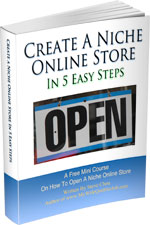
Ready To Get Serious About Starting An Online Business?
If you are really considering starting your own online business, then you have to check out my free mini course on How To Create A Niche Online Store In 5 Easy Steps.
In this 6 day mini course, I reveal the steps that my wife and I took to earn 100 thousand dollars in the span of just a year. Best of all, it's absolutely free!

